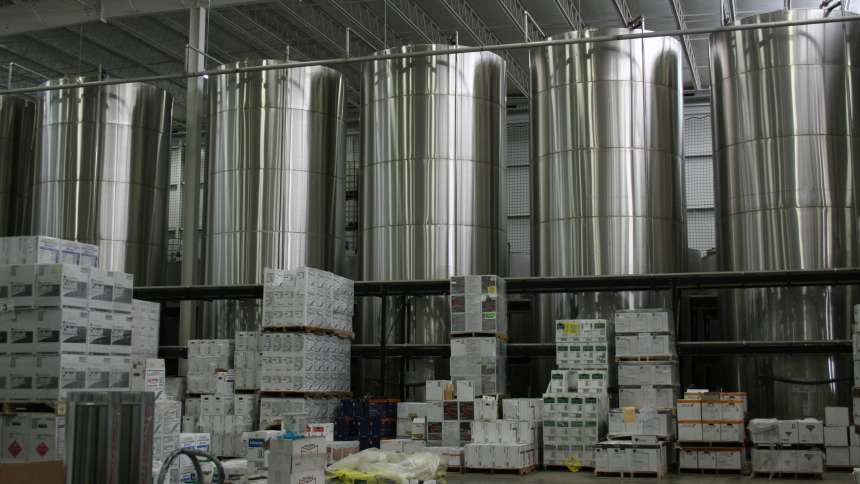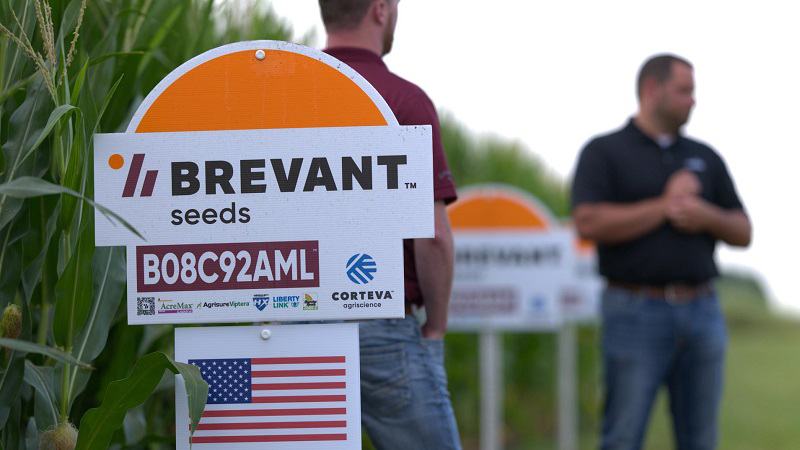Crop Protection Products Market: Complexity Begets Opportunity

With the market remaining relatively stable in 2016, retailers are looking to 2017 and new cropping systems from the Big 3 to drum up fresh business possibilities in crop protection. Pictured: The crop protection storage area at Asmus Farm Supply in Rake, IA.
While other key market segments in agriculture continue to see tumultuous shifts in sales volumes going forward (large equipment sales are down in general, and the CropLife 100 survey reflected that with 18% of ag retailers surveyed indicating they’d spend 2017 on the sidelines when it comes to purchases to update their fleets), crop protection products have steadfastly withstood the headwinds of continually declining commodity prices, posting a relatively stable (all things considered) 1% decline in sales volumes from the 2015 CropLife 100 numbers.
There are a few overarching reasons for the ag chemical market’s flatness, chiefly among them being the northward spread of herbicide-resistant weeds, which has naturally helped retailers in moving more specialty herbicide tank mixes in 2016 as growers look to maintain current yield levels at any cost necessary.
However, not all is sunny in crop protection circles, as in contrast to the somewhat encouraging herbicides market, the other two sectors of the crop protection products category — insecticides and fungicides — didn’t perform nearly as well in 2016. During 2015, both of these segments benefitted from an unusually wet and cool spring season, which caused pest and disease pressures to show up in crop fields much earlier than normal.
But, as our Editor Eric Sfiligoj wrote last month, “for much of 2016 the weather across most of the nation was closer to normal. This apparently kept the demand for insecticides and fungicides from showing significant gains. According to 2016 CropLife 100 survey respondents, only 42% saw their fungicide sales for the year increase from 1% to more than 5%. This was down significantly from 2015, when 54% of respondents had fungicide sales increases in these ranges. Instead, most respondents (44%) saw their fungicide sales decline 1% to more than 5% during 2016.”
Southern States Cooperative (Richmond, VA), the nation’s eighth largest crop inputs retailer, with its uniquely wide-reaching sales territory that stretches south from the Chesapeake Bay region all the way down to Florida, witnessed in 2016 “adoption of a newer technology in seed and also in pre-emergent herbicides,” according to Jim Ebert, Director of Agronomy Procurement — Seed & Crop Protection.
“The most visible sign to yield-robbing pests is going to be weeds,” he explains. “Insects, diseases and micronutrient deficiencies aren’t as visible unless you have a severe deficiency or outbreak. The visible signs two years ago drove a behavior change this past year, and I expect the adoption to continue into 2017.”
2016: Year of Crop Protection Product (CPP) Consolidation
Monsanto-Bayer. Dow-DuPont. Syngenta-ChemChina.
These potential crop protection giant pairings dominated headlines across the past 12 months, and whether or not regulators sign off on the final combined entities will continue to generate significant interest, both inside and outside of agriculture. In farming circles, where brand loyalty and long-standing business relationships often trump bottom line-driven, cost-cutting decisions, much of the concern when it comes to these mega mergers is how they will affect the level of purchasing choice that independent retailers have enjoyed for years in putting together product portfolios for growers.
Ebert, who heads up CPP product procurement for 134 retail outlets spread mostly across nine Mid-Atlantic region states, isn’t too worried about how the mergers will affect his ability to find value for Southern States’ grower-customers.
“As a retailer, I don’t see any major changes, and I believe product choice won’t change,” Ebert says. “The mergers will cause products to get spun-off because of anti-trust laws, but I believe many of those products will get picked up by smaller companies, depending upon where the product is in its life cycle. The biggest opportunity will be for the smaller CPP companies. They could pick up some of the spun off products and this could give them a more balanced portfolio.”
New Cropping Systems for 2017
Another area of interest among crop input retailers for 2017 remains the fast-approaching debut of dicamba-tolerant soybeans and cotton (Monsanto’s highly anticipated Roundup Ready 2 Xtend), as well as Dow AgroScience’s 2,4-D powered Enlist weed control system in corn and soybeans. We’ve heard from several retailers over the past couple months that these systems and the complexity they will bring (compared to the glyphosate-tolerant system) will end up benefitting studied up retailers, while those just in it to make a buck will find tough sledding.
“The complexity of the dicamba-tolerant system lies in environmental conditions and in the surrounding (sensitive) crops,” Ebert explains. “For growers, the key to success using the dicamba systems will be using a good pre-emergent weed control program. Dicamba should be used as a tool when needed, and not as a total weed control program that was adopted in the glyphosate-tolerant system.”
Additionally, one of our 2016 PACE meeting attendees had an interesting thought on just how these two new cropping systems will change how the retailer does business: More custom application opportunities than in the past.
“From some retailers their custom application business, after declining for several years, is growing,” said the PACE attendee. “We feel this is mostly driven by the complexion of these new cropping systems, and also some unfortunate circumstances around people getting shot and killed in Arkansas over dicamba drift. Overall, I feel in general the complexity around legal pesticide applications is growing, and I think farmers will rely on the professional surgeon approach with the local retailer more and more going forward.”
So, as 2016 goes out with the old and 2017 comes in with the new, we’ll continue to monitor how this evolving crop protection products marketplace will influence your bottom line.
Here’s to a successful 2017 in all of your crop protection product endeavors!






